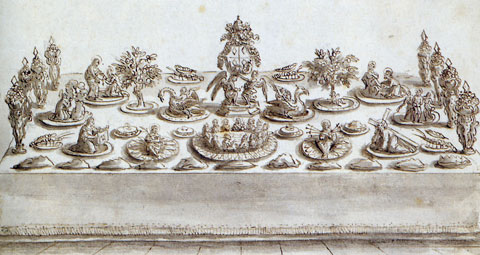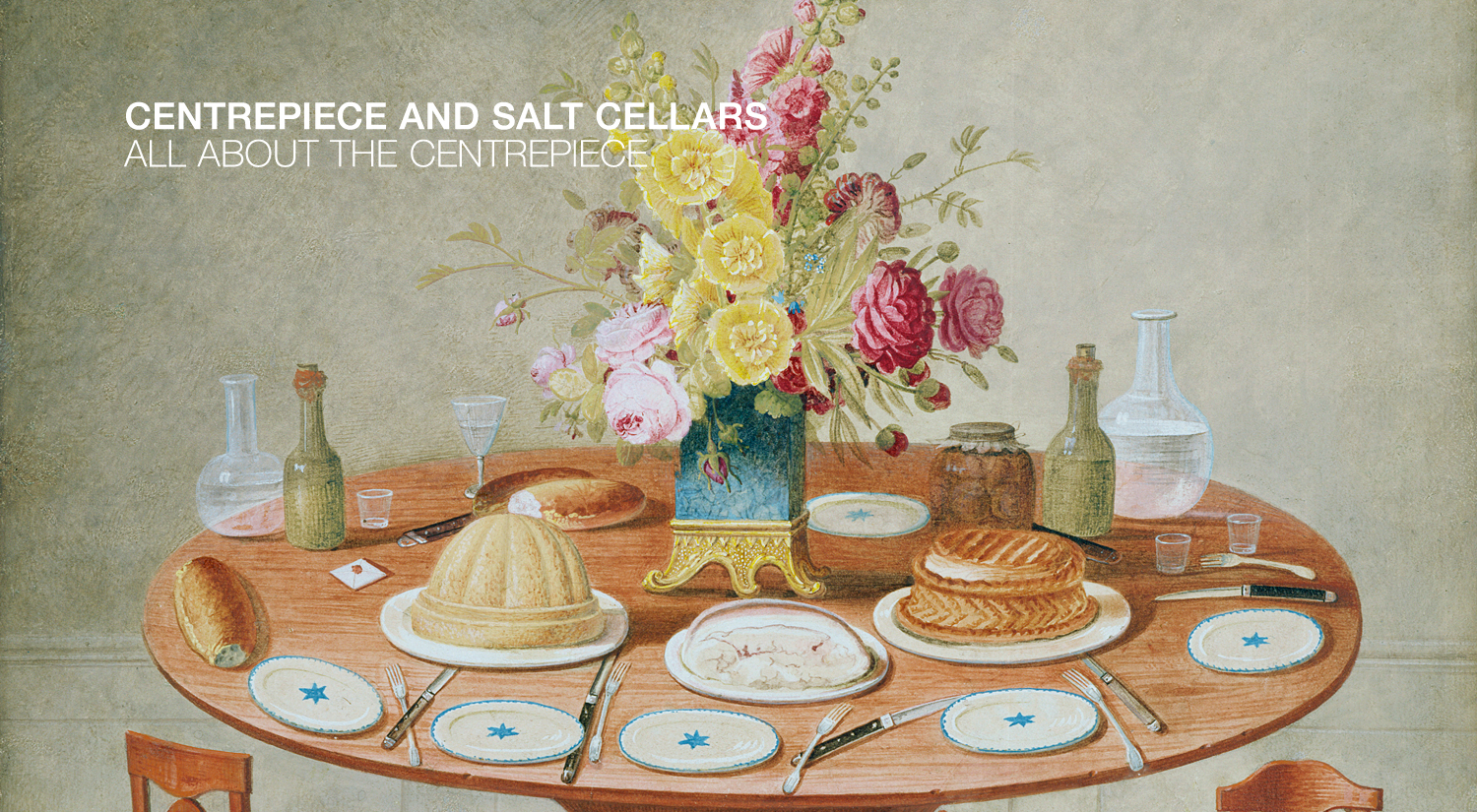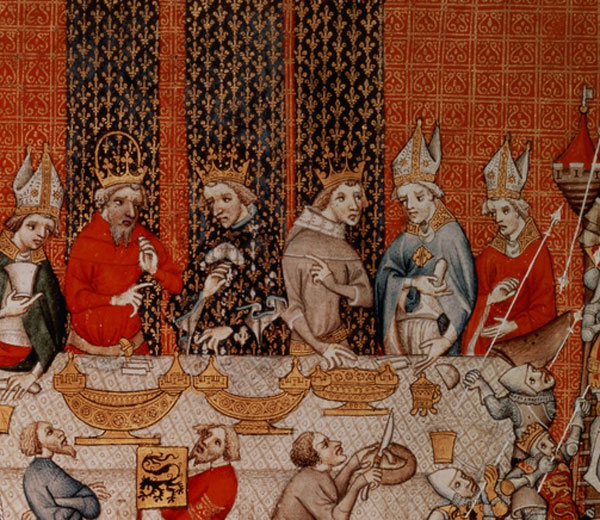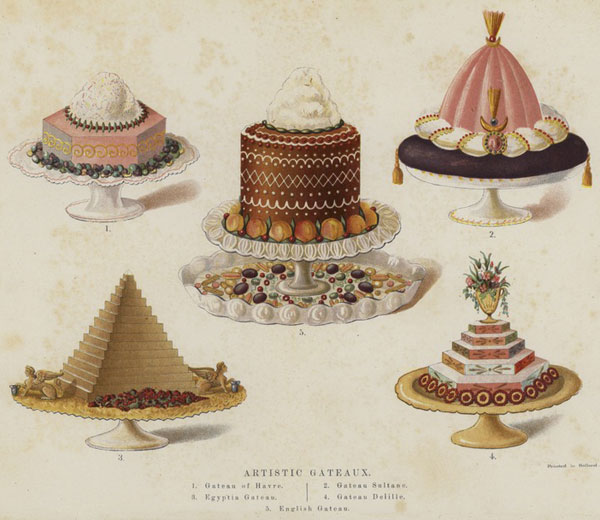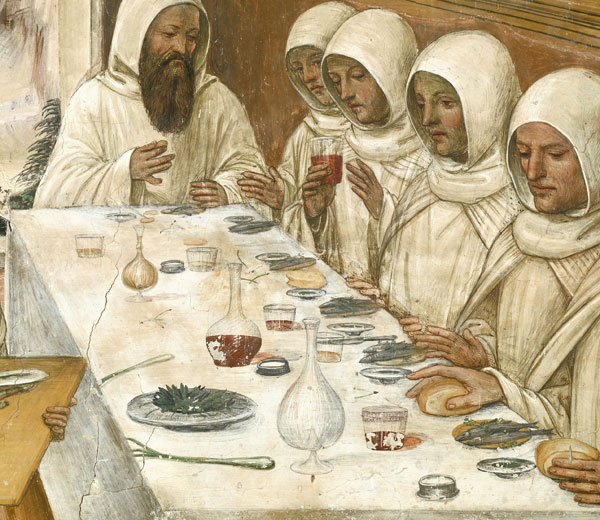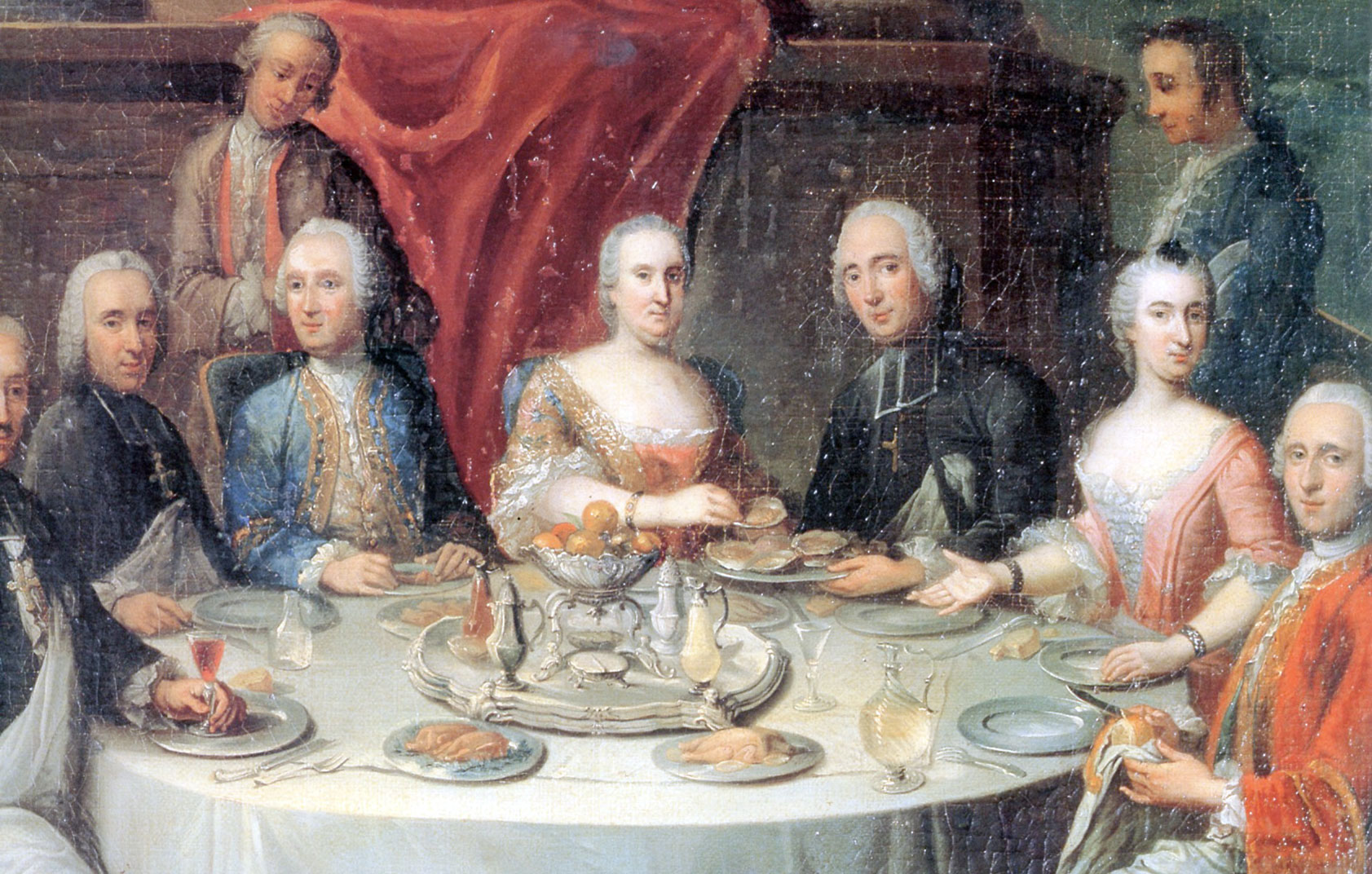
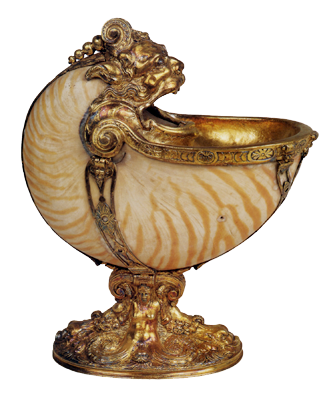
Central-northern Italian workshop, Cruet, c. 1550–1560. Florence, Museo di Storia Naturale
Pierre Paul Sèvin, Table for Holy Week with centrepieces and the coat of arms of Pope Clement IX, c. 1667–1669. Stockholm, Nationalmuseum.
In alto: Paul-Joseph Delcloche, Lunch at the Court of Prince Bishop Johann Theodor von Bayern, 1749, detail. Private collection
In basso: Jean-Louis Prévost, Still Life with a Vase of Flowers on a Table Set for a Meal, c. 1810, detail. Cambridge, Fitzwilliam Museum
CENTREPIECE AND SALT CELLARS. BEAUTIFUL ORNAMENTS
Trionfo, dessert, surtout, milieu de table, cadenas, nef de table, centrepiece: these are some of the terms used to identify the highly decorative objects or groups of objects placed in the centre of the table. As early as the Middle Ages, a period not particularly predisposed to futile decoration, salt cellars were the only items on the table both for their functional and ornamental value, as well as their symbolic significance: salt, a precious seasoning, was kept under lock and key and placed next to the lord.
Over subsequent centuries, the centre of the table increasingly became a place for displaying decorative elements to amaze one’s guests. The centrepieces were made from a wide range of different materials, from food itself, used in the 16th century to create vertical constructions, to porcelain, bronze and glass.
Depictions of all kind were acceptable and there was also no shortage of religious subjects. Pope Clement IX, who as regards economic policy undertook to promote consumerism, commerce and manufacturing in the papal state, seems to have wanted to endorse such initiatives himself. In fact, the centrepieces for the table of the Sacred College on Maundy Thursday included three bowls of fruit, containers of spices and confectionary, and pieces of metalwork representing the Flagellation, Christ Bearing the Cross, the Veronica, and other scenes from the Passion of Christ.
